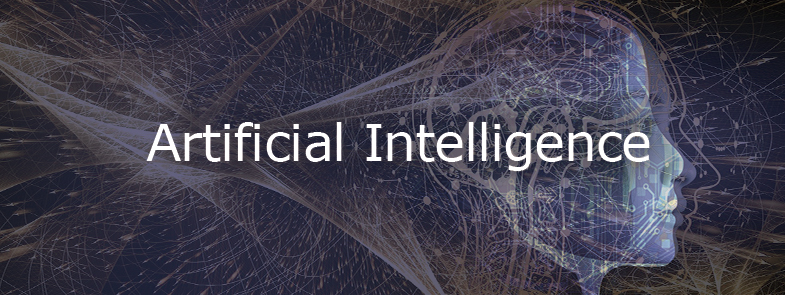Quantum computers are expected to play a crucial role in Machine Learning (ML) and AI. But qubit counts and more-sophisticated algorithms alone will not deliver quantum advantage. Toolkits and a unified experience are needed to bring it to the masses.
Think of Quantum computing as a new kind of computing, using the same physical rules that atoms follow in order to manipulate information. At this fundamental level, quantum computers execute quantum circuits—like a computer's logical circuits but now using the physical phenomena of superposition, entanglement, and interference to implement mathematical calculations out of the reach of even the most advanced supercomputers.
All computing systems rely on a fundamental ability to store and manipulate information. Current computers manipulate individual bits, which store information as binary 0 and 1 states. Quantum computers leverage quantum mechanical phenomena to manipulate information. To do this, they rely on quantum bits, or qubits.
Superposition refers to a combination of states we would ordinarily describe independently. To make a classical analogy, if you play two musical notes at once, what you will hear is a superposition of the two notes.
Entanglement is a famously counterintuitive quantum phenomenon describing behavior we never see in the classical world. Entangled particles behave together as a system in ways that cannot be explained using classical logic.
Finally, quantum states can undergo interference due to a phenomenon known as phase. Quantum interference can be understood similarly to wave interference; when two waves are in phase, their amplitudes add, and when they are out of phase, their amplitudes cancel.
Quantum and AI
There are high hopes that quantum computing’s tremendous processing power will unleash exponential advances in artificial intelligence (AI). AI systems thrive when machine-learning algorithms used to train them are given massive amounts of data to ingest, classify, and analyze. The more precisely that data can be classified according to specific characteristics, or features, the better AI will perform. Quantum computers are expected to play a crucial role in machine learning, including the crucial aspect of accessing more computationally complex feature spaces—the fine-grain aspects of data that could lead to new insights.
Machine learning is changing the way we use computers in our everyday lives and in science. It is natural to seek connections between these two emerging approaches, in the hope of reaping multiple benefits.
IBM is testing quantum systems to train and run machine-learning algorithms to dramatically improve tasks such as classification of data. This could allow us to solve complex problems more quickly, potentially improving applications like disease diagnosis, fraud detection, efficient energy management, and more.
Scaling Quantum Systems
For commercial application, quantum computers will need to demonstrate fault tolerance, just as we expect our existing computing systems to. What does it take to create a fault-tolerant quantum system? To increase the computational power of a quantum computer, improvements are needed along two dimensions.
- Qubit count: The more qubits you have, the more states can in principle be manipulated and stored.
- Low error rates: These are needed to manipulate qubit states accurately and perform sequential operations that provide answers, not “noise.”
A useful metric for understanding quantum capability is quantum volume. This measures the relationship between number and quality of qubits, circuit connectivity, and error rates of operations. Developing systems with larger quantum volume will lead to discovering the first instances of applications where quantum computers can offer a computational advantage for solving real problems.
Quantum Applicability
Organizations across a wide array of industries are partnering with IBM to explore a broad set of quantum computing applications. Carmakers, airlines, energy companies, healthcare providers, financial services firms, and world-class research organizations are considering new solutions and services that until recently were unthought of. Organizations are now able to start their quantum journey with access to advanced systems and a comprehensive software stack, supported by a large quantum development community. These projects help showcase quantum computing’s power to solve real-world problems too complex for even today’s most-powerful supercomputers.
The annual IBM Quantum Summit looked at the promise of quantum computing for industry looking at several business challenges that quantum computers are well-suited to tackle. Foremost among them are the ability to help researchers create simulations of complex chemical compounds and reactions out of reach for today’s computers. Such simulations are expected to have a profound impact on the development of new materials that improve battery technology, resist corrosion, and make renewable energy more efficient and less expensive.
Quantum Roadmap
IBM announced a roadmap at the annual IBM Quantum Summit to reach 1,000+ qubits by 2023. Qubit counts and more-sophisticated algorithms alone will not deliver Quantum Advantage (the point where certain information-processing tasks can be performed more efficiently or cost-effectively on a quantum computer versus a classical one).
The roadmap aims to take the technology from today’s noisy, small-scale devices to the million-plus qubit devices of the future. This is essential if quantum computers are to help industry and research organizations tackle some of the world’s biggest challenges, across industry, government, and research. Here are five things you should know about the roadmap:
- IBM quantum scientists are building a quantum computer with a 1,121-qubit processor, called Condor, inside a large dilution "super-fridge." The Condor processor-based quantum computer will be online and capable of exploring Quantum Advantage by 2023.
- Condor lays the groundwork for scaling to fully error-corrected, interconnected, 1-million-plus-qubit quantum computers. These multi-million-qubit super-fridges, connected via intranets, will make the exploration of classically intractable problems possible for any number of industries, including finance, chemistry, and AI.
- In 2021, IBM will debut the 127-qubit "Eagle" chip. Eagle features several upgrades to reduce qubit errors, including its unique layout, which will allow for scaling the number of qubits that work together as logical qubits—the "fault tolerant" qubits needed to reach Quantum Advantage. With the Eagle processor, IBM will also introduce concurrent real-time classical compute capabilities that will allow for execution of a broader family of quantum circuits and codes.
- Eagle will be followed by the 433-qubit "Osprey" processor in 2022. Osprey continues to push the boundaries of fabrication techniques to build a smaller chip to ensure more logical qubits that don't sacrifice performance. Its more-efficient and denser controls and cryogenic infrastructure will ensure that scaling up future processors doesn’t sacrifice the performance of individual qubits, introduce further sources of noise, or take up too large a footprint.
- These advances are necessary to establish a Quantum Industry. Over the next three years, IBM's multidisciplinary team of scientists will work alongside academia and industry to help solve the challenges of fabrication, cryogenics, and electronics, as well as improve software capabilities, such as error-correction coding.
Embracing Quantum
MIT has introduced a Quantum Computing Online Curriculum for professionals and leaders in business, government, and technology to deliver a better understanding of the business and technical implications of quantum computing. The online courses will apply the principles of quantum computing to real-world examples utilizing a state-of-the-art web-available quantum computer: IBM’s Quantum Experience.
MIT’s quantum learning initiative is created in collaboration with IBM Q, and the MIT-IBM Watson AI Lab. The MIT-IBM Watson AI Lab is focused on fundamental AI research with the goal of propelling scientific breakthroughs that unlock the potential of AI. A key initiative of the lab is the intersection of quantum computing and machine learning.
Currently, quantum computing researchers and enthusiasts need to know quantum programming; it’s simply a must. Soon, though, all they will need is a quantum app store and a line of code. Not an app store like in your smartphone, but similar to a code repository of today, such as GitHub—a type of digital library where software developers make the code they have written available to anyone. And in the near future, developers will be able to put in their lines of code that will call on quantum computers to deal with specific tasks a regular computer can’t.
The quantum research field has undergone dramatic changes in the last few decades, but only recently have quantum scientists released easy-to-use tools to make this discipline accessible to everyone. IBM offers all the quantum programming tools you need with Qiskit and makes it easy to get started running quantum circuits on our systems with the IBM Q Experience quantum cloud platform. Users have already run over 28 million experiments and simulations.
Your Next Steps
Consider applying for the IBM Quantum Challenge: “Programming for the Not-So-Distant Quantum Future,” a three-week quantum computing educational challenge starting on November 8 or November 9, 2020 (depending on your time zone). More information is available here.
In addition, IBM Quantum will sponsor 5,000 students to attend an eight-month intensive quantum computing course from The Coding School.
Finally, if AI is an area you are interested in, you can learn more about it in the book I co-authored, Artificial Intelligence: Evolution and Revolution.
Special thanks to the IBM quantum team and their blogs, a key source for this article.















 Business users want new applications now. Market and regulatory pressures require faster application updates and delivery into production. Your IBM i developers may be approaching retirement, and you see no sure way to fill their positions with experienced developers. In addition, you may be caught between maintaining your existing applications and the uncertainty of moving to something new.
Business users want new applications now. Market and regulatory pressures require faster application updates and delivery into production. Your IBM i developers may be approaching retirement, and you see no sure way to fill their positions with experienced developers. In addition, you may be caught between maintaining your existing applications and the uncertainty of moving to something new. IT managers hoping to find new IBM i talent are discovering that the pool of experienced RPG programmers and operators or administrators with intimate knowledge of the operating system and the applications that run on it is small. This begs the question: How will you manage the platform that supports such a big part of your business? This guide offers strategies and software suggestions to help you plan IT staffing and resources and smooth the transition after your AS/400 talent retires. Read on to learn:
IT managers hoping to find new IBM i talent are discovering that the pool of experienced RPG programmers and operators or administrators with intimate knowledge of the operating system and the applications that run on it is small. This begs the question: How will you manage the platform that supports such a big part of your business? This guide offers strategies and software suggestions to help you plan IT staffing and resources and smooth the transition after your AS/400 talent retires. Read on to learn:
LATEST COMMENTS
MC Press Online